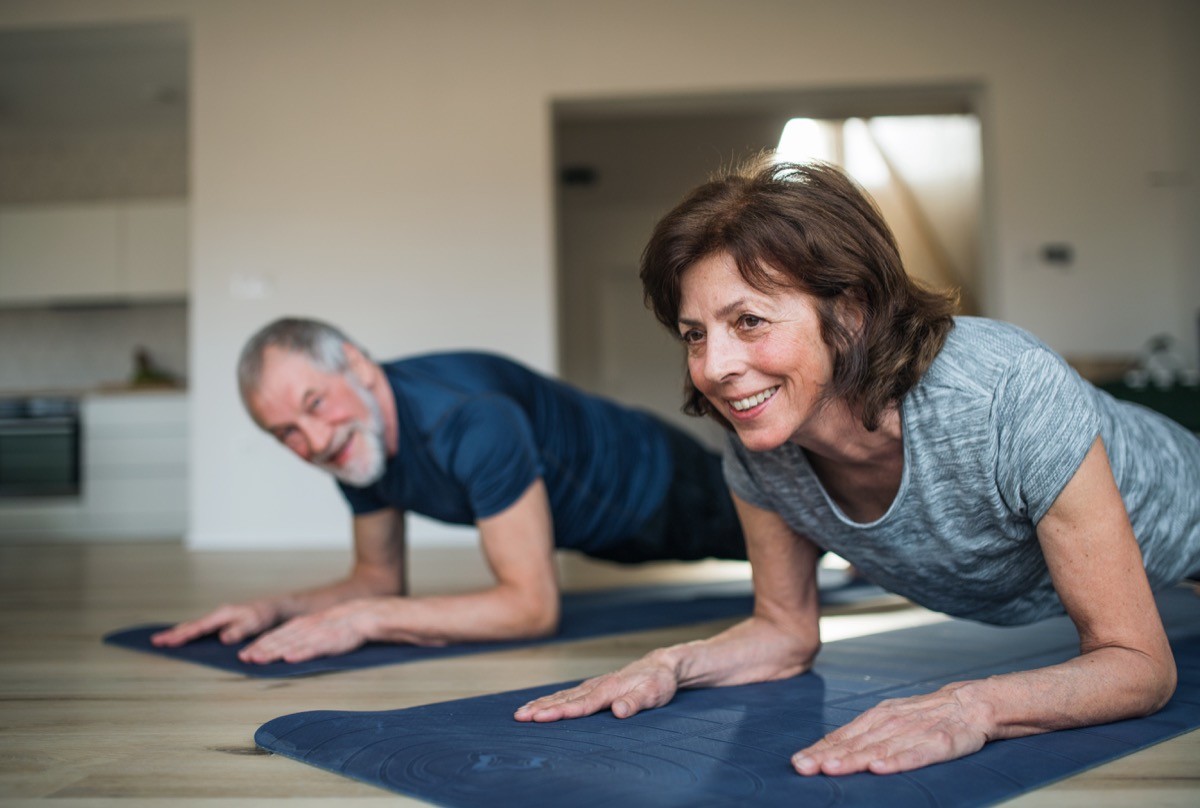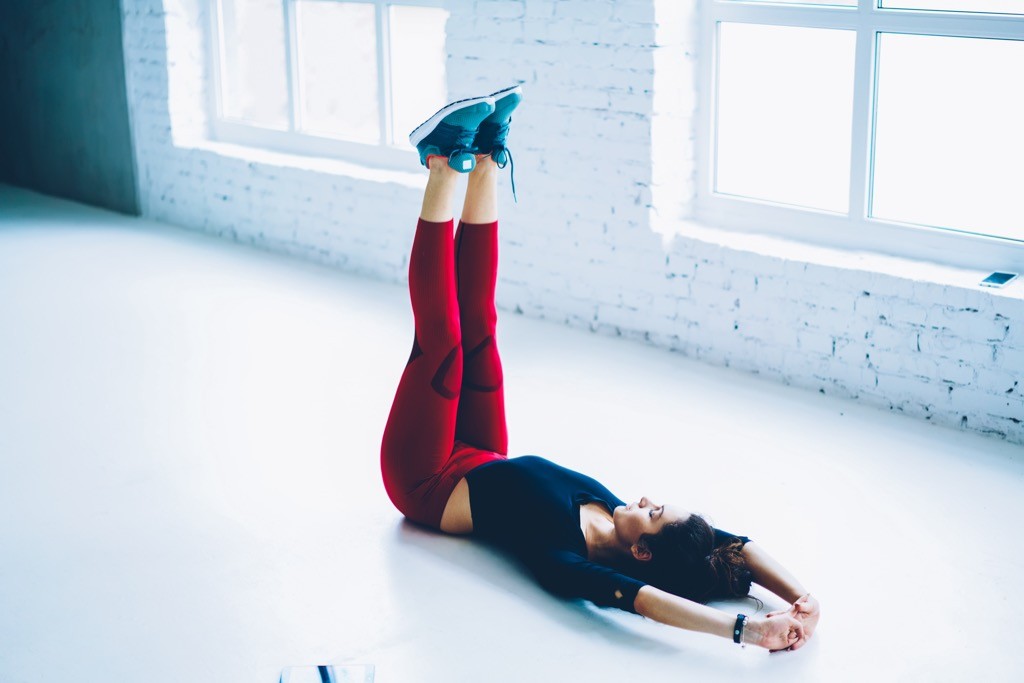5 Best Exercises to Improve Coordination, According to Fitness Experts

Coordination is often confused with balance. But while they do go hand in hand, coordination is important on its own, fitness experts say. If you find that you’re somewhat uncoordinated, there are also exercises you can do to improve—which can have even more benefits for your overall health and well-being.
“Coordination is often lumped in with balance and the training of balance. While there is truth to this, coordination has more to do with how our movements integrate to meet the task at hand,” Joy Puleo, NPCP, ACSM, director of education at Balanced Body, tells Best Life. She uses gait as an example.
“There is a strong balance component to gait, but the stride length, the strength and timing of the ankle movements with the lower leg and up the kinetic chain is so important to a healthy, vital, gait pattern,” she explains, noting that there are neurological, physical, and emotional aspects that work together to help the body “anticipate the need.”
As we get older, coordination becomes especially important because “we become more susceptible to accidental falls and injuries,” notes Jah Washington, CPT, owner of Harlem Kettlebell Club.
“This increased risk is often due to a decline in balance, coordination, and strength,” Washington adds. “Additionally, older adults tend to move away from skill-based movements and athletic activities, which can further heighten the risk of injury, even during simple everyday tasks.”
Looking to improve your stability and help your body work more efficiently? Read on for the six best exercises to improve coordination, according to fitness experts.
RELATED: 7 Best Exercises to Improve Your Balance, According to Fitness Experts.
1
Jumping rope

First up on the list of exercises to improve your coordination is jumping rope.
“Jumping rope is an excellent way to improve jumping and landing mechanics while training the body to produce and absorb force without getting injured,” Washington says.
He adds, “When done with proper technique, it’s a low-impact exercise that helps build resilient lower-body joints and tendons and prepares individuals for more intense jumping activities.”
2
Running

Running shouldn’t be solely categorized as cardio. According to Washington, it can also improve “speed, strength, and power,” helping you move more effectively.
“Jogging and/or sprinting both require coordination of the upper and lower body to promote better running efficiency,” he says. “As it pertains to sport, being able to accelerate, decelerate, cut, and change direction are all crucial to being a quality athlete.”
RELATED: How Many Push-Ups Can You Do? The Number Says A Lot About Your Health.
3
Planks

Because they’re known to help improve core strength, planks are also a key player in coordination.
According to a 2015 study published in the Journal of Physical Therapy Science, core muscle training improved the Weight Distribution Index (WDI), a measurement of balance, and the Stability Index, which measures stability, in older adults.
4
Single-leg balance

Balance and coordination go hand in hand, making balance drills a good option for all age groups. For coordination, Washington recommends focusing on one leg at a time.
“Since much of our daily movement, like walking, running, jumping, or playing sports, involves time spent on one leg, even briefly incorporating balance training into your routine can significantly reduce the risk of falls and injuries,” he explains.
One helpful drill Washington suggests involves five different colored cones spaced a few inches apart on the ground. Starting out on one leg, you then reach down and touch a cone, return to standing, and repeat until you’ve touched each of the cones. After that, switch legs and repeat.
RELATED: 6 Best Walking Workouts for Weight Loss.
5
Pilates and yoga

Coordination requires different parts of your body to work in sync, which is why both pilates and yoga are recommended options to improve coordination.
“Pilates and yoga are excellent mediums that train the coordination of controlled movement against resistance, whether spring-loaded, as is the case with Pilates equipment, or body weight, as is the case with yoga and mat Pilates,” Puleo says. “They both incorporate breath and put the focus on quality of movement.”
They’re particularly beneficial for the “aging population” to introduce to their weekly routine, she adds.